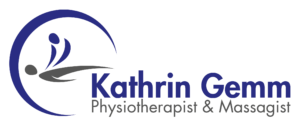Vojta therapy
Postural and musculoskeletal disorders, especially if they are caused by disorders of the brain, require very complex treatment, often months, sometimes years, which should start as early as possible. With the Vojta method, a therapy was developed for these clinical pictures that has become an indispensable part of modern physiotherapy in orthopaedics, neurology and paediatrics. “Normal” movement sequences such as grasping, standing up and running are not primarily learned, practiced and trained. Rather, Vojta Therapy stimulates the brain to activate “innate, stored movement patterns” and to export them as coordinated movements into the trunk and limb muscles. With the so-called reflex movement, Vojta has developed a method that makes elementary movement patterns accessible again, at least in some areas, even in people with damaged central nervous systems and musculoskeletal systems. To do this, the therapist exerts targeted pressure on certain areas of the patient’s body in the prone, back and side position. In people of all ages, this stimulus “reflexively” leads to two complexes of movement, which contain all the “building blocks” of human locomotion: “reflex crawling” and “reflex turning around”. These movement complexes can be activated independently of the patient’s will.







